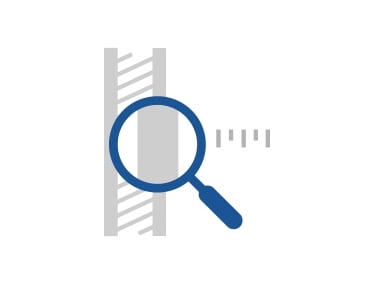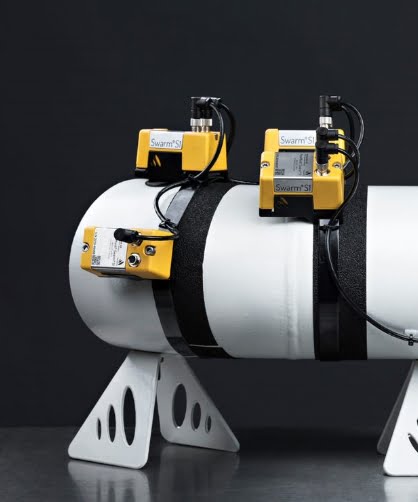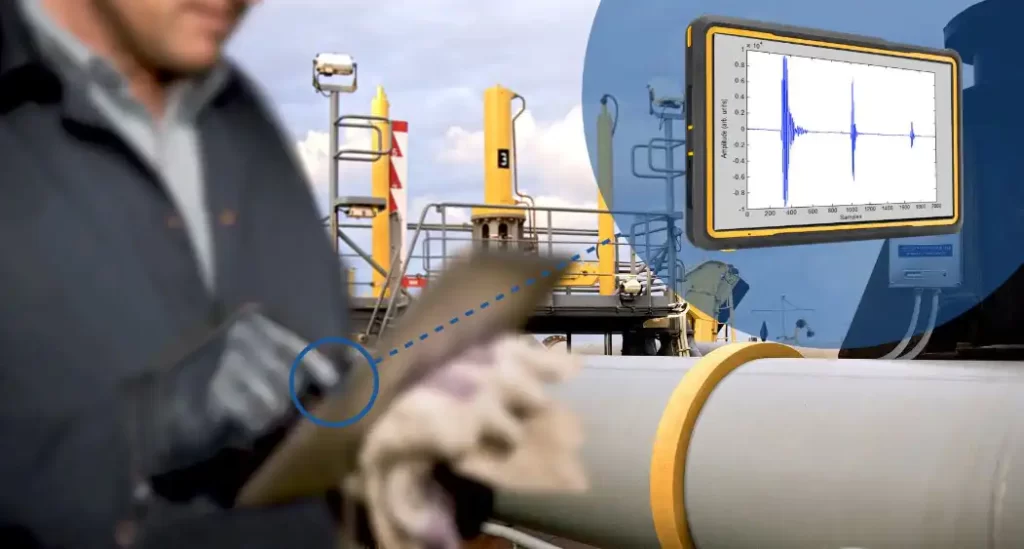

Technology
Sensorlink deliver high resolution corrosion and erosion monitoring systems.
All Sensorlink’s corrosion and erosion monitoring systems are based on the well-established ultrasonic pulse-echo method. Special processing methods have been developed for such instrumentation that is fixed to the pipeline, giving high resolution and accuracy measurements for monitoring wall loss.
In the oil and gas sector corrosion and erosion are serious problems. Internal corrosion in pipelines in the oil and gas industry is generally caused by water, carbon dioxide (CO2) and hydrogen sulfide (H2S). Corrosion can also be aggravated by microbiological activity. Erosion is generally caused by particles in the flow causing wear and tear on the inner pipe-wall. This internal corrosion and erosion needs to be controlled and monitored. Sensorlink provides tools that will be useful in these operations.
Sensorlink utilizes ultrasonic pulse-echo technology to provide accurate measurements of internal corrosion and erosion rates.
Ultrasonic pulse-echo measurement is a well-established method for measuring wall thickness and detecting defects in the oil and gas industry. The technology is well known and this makes the measured values from Sensorlink’s systems, which is based on the same technology, easy to verify by the client.
When it comes to erosion and corrosion monitoring, ultrasound has distinct advantages compared to other available techniques.
It is non-intrusive and measures the metal thickness directly and is not dependent on indicators like for example probes and coupons.
Advances in low-noise electronics, sensor technology and signal processing algorithms now make it possible to achieve high resolution results using a permanently installed ultrasonic pulse echo unit.

Ultrasonic wall thickness measurements
Ultrasonic measurement of wall thickness has conventionally been carried out manually by use of a suitable ultrasonic transducer and a measuring instrument. In most cases a basic probe utilizing a simple contact transducer to determine the thickness of the pipeline wall at a specific spot. This method usually yields a typical accuracy in the range of plus or minus 0.1 to 0.2 mm, depending on the skill of the operator. In comparison Sensorlink systems are permanently installed and will give high accuracy readings over time, which enable better decisions.
Accurate wall thickness monitoring
The Sensorlink technology is capable of measuring changes in the wall thickness with greater accuracy, thus avoiding the uncertainty caused by inadequate instruments or unskilled operators. Wall thickness can be measured to a very high accuracy by repeating measurements at the same spot over time with permanently installed instrumentation.
Resolution of such high quality and accuracy has been made possible by careful refinement of Sensorlink’s equipment, manufacturing and technology, with notable innovations in the following areas:
- Signal Processing.
- Electronics with high signal to noise ratios.
- Optimum placement of transducers relative to the pipewall.
- Electronics and transducers capable of operating in seawater at great depth and in high temperature.
- Mechanical solutions for all types of environment, topside and subsea.
- Temperature compensation capability: the system is able to adjust to variations in the speed of sound caused by temperature variations in the medium (seawater or steel).
- Delivers real time data.
- Automated measurement, logging and analysis.
Our careful and committed technology development has resulted in Sensorlink Swarm and Sensorlink UltraMonit® – giving you the best wall thickness monitoring option both under and over water.

